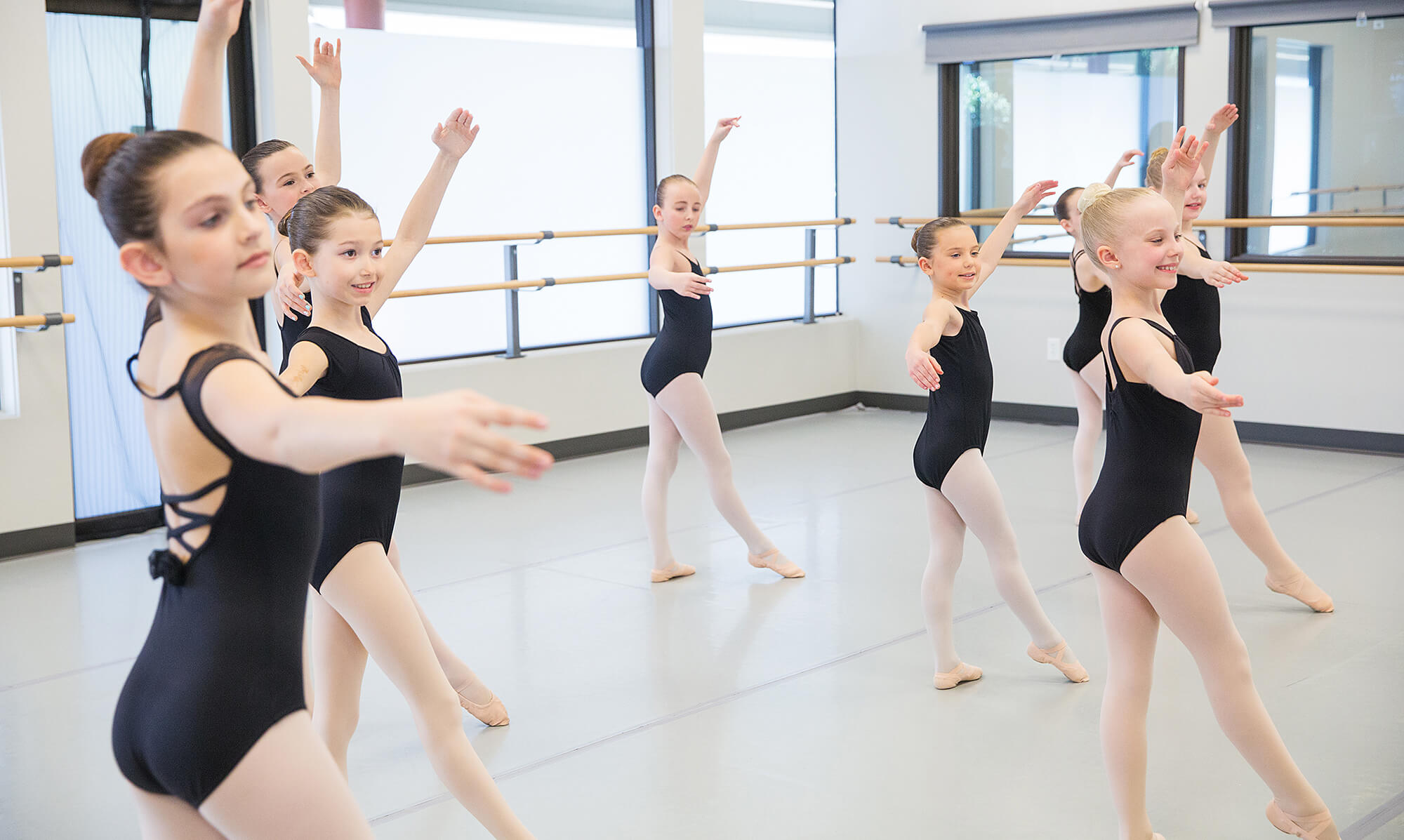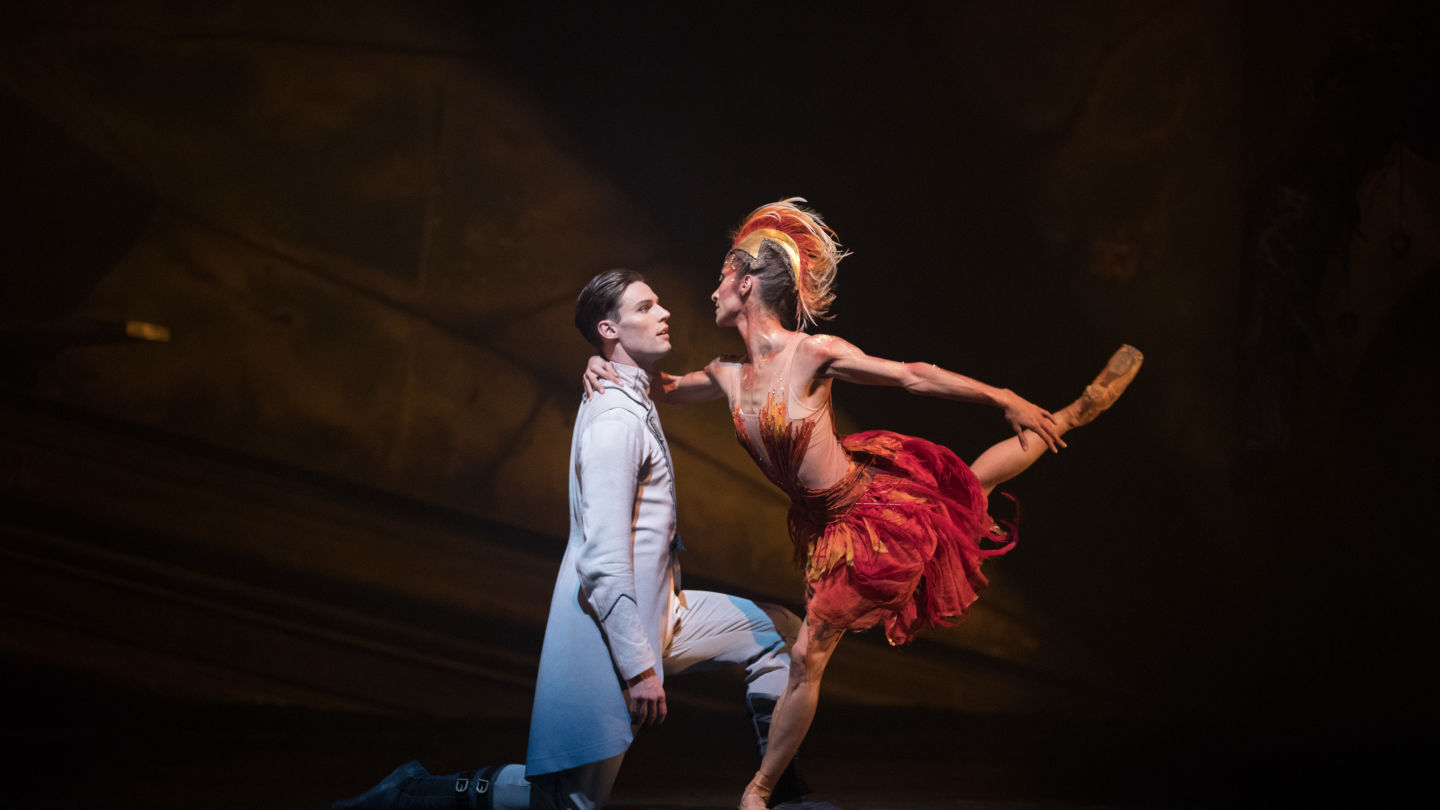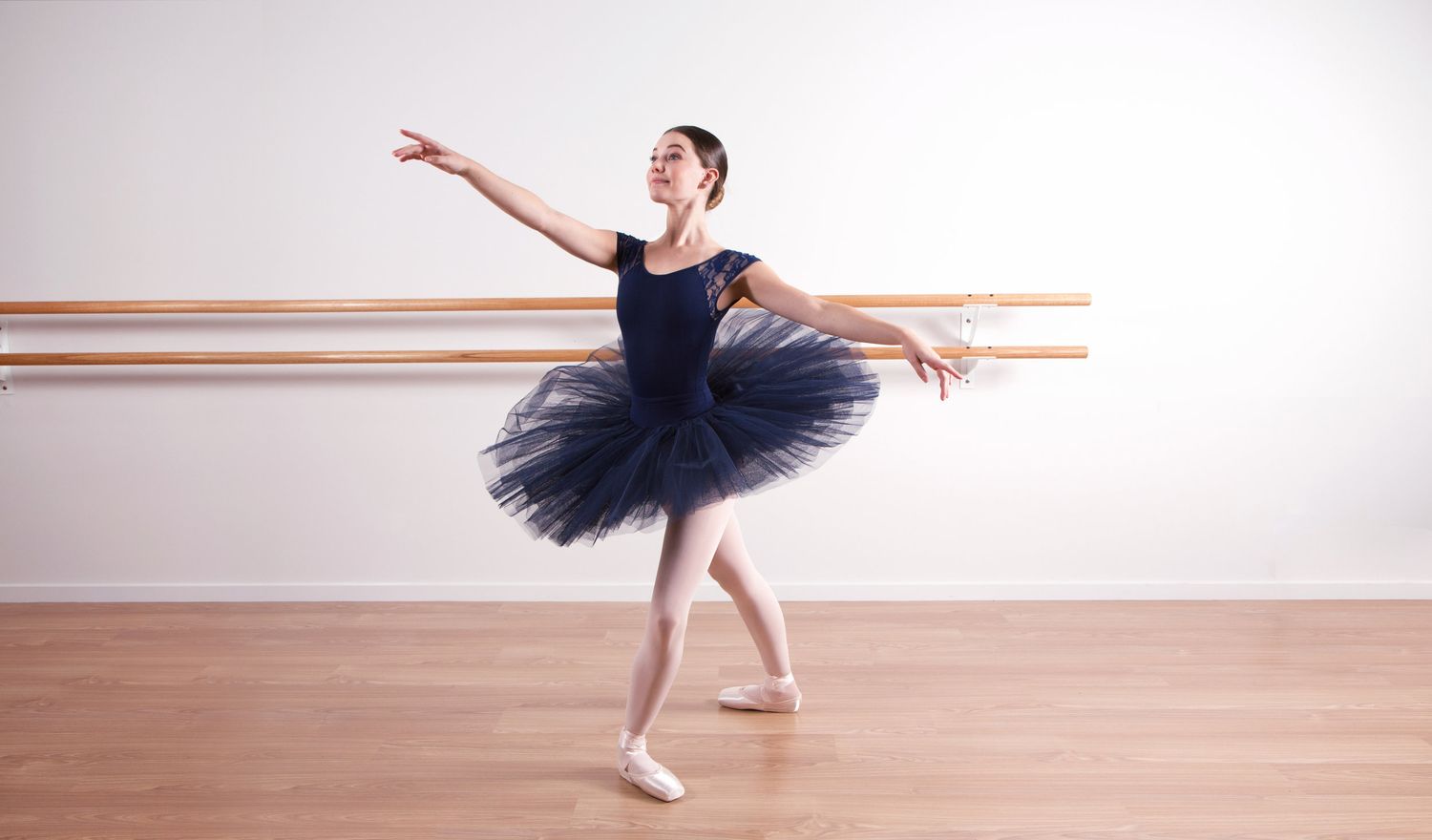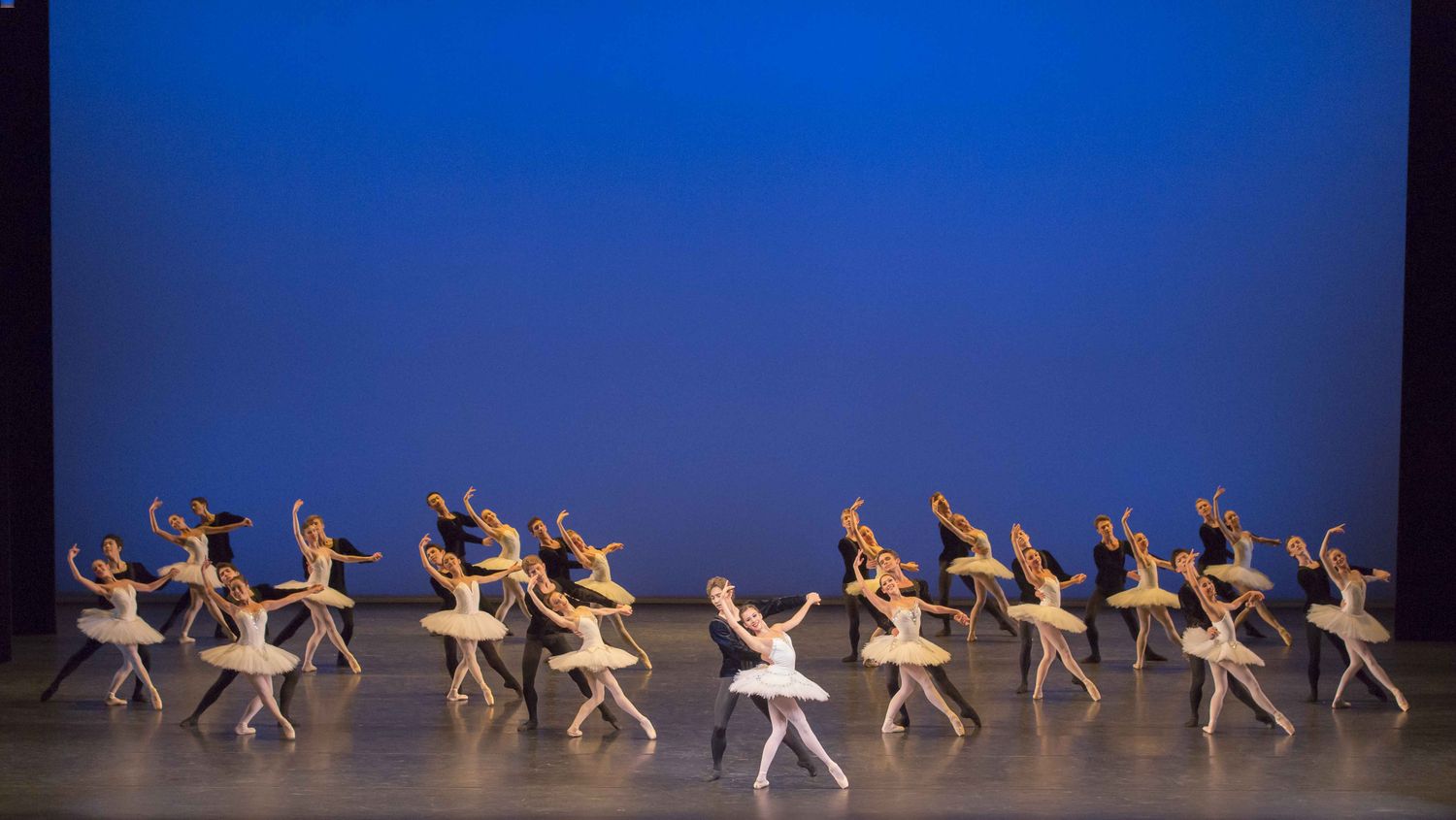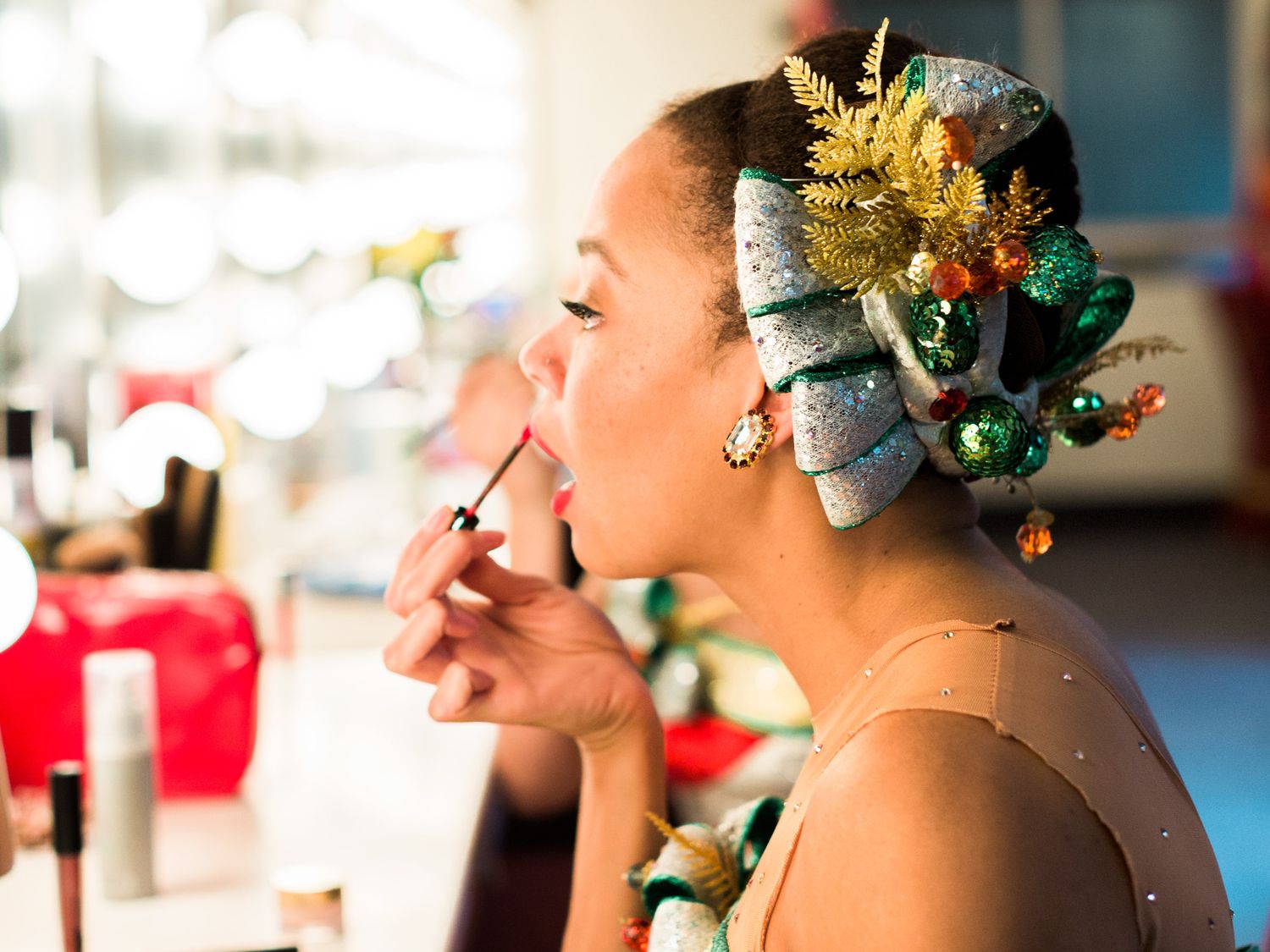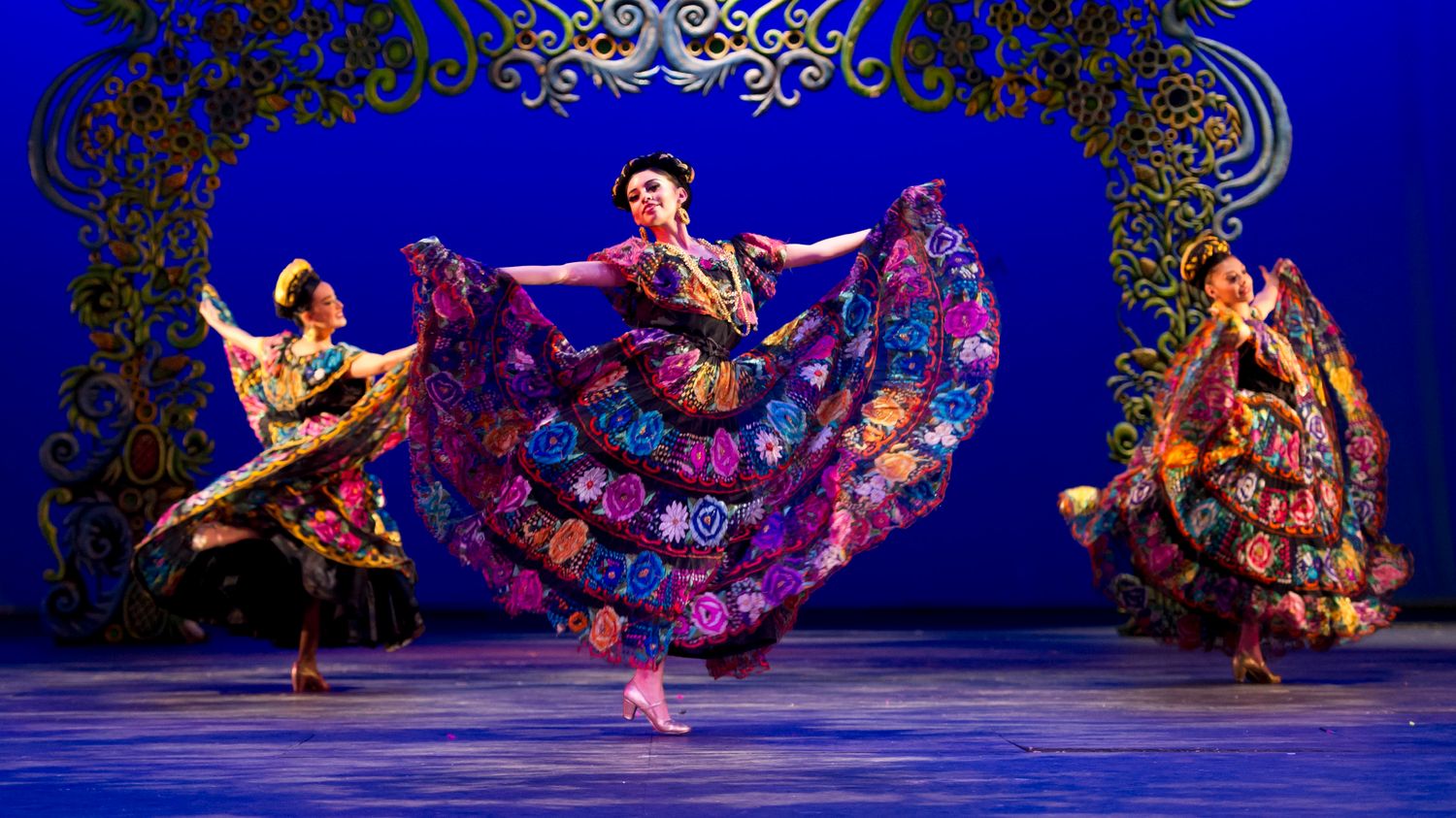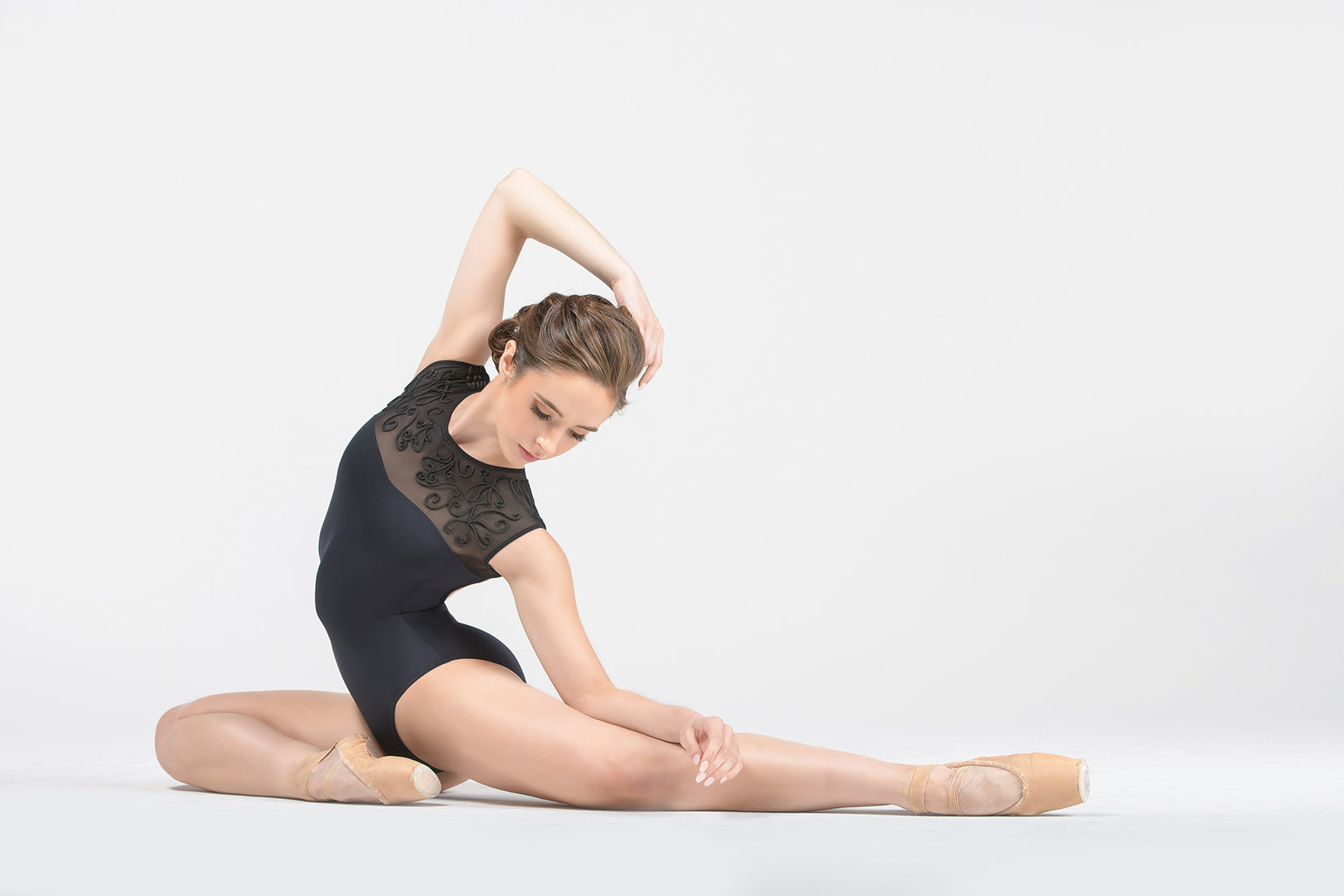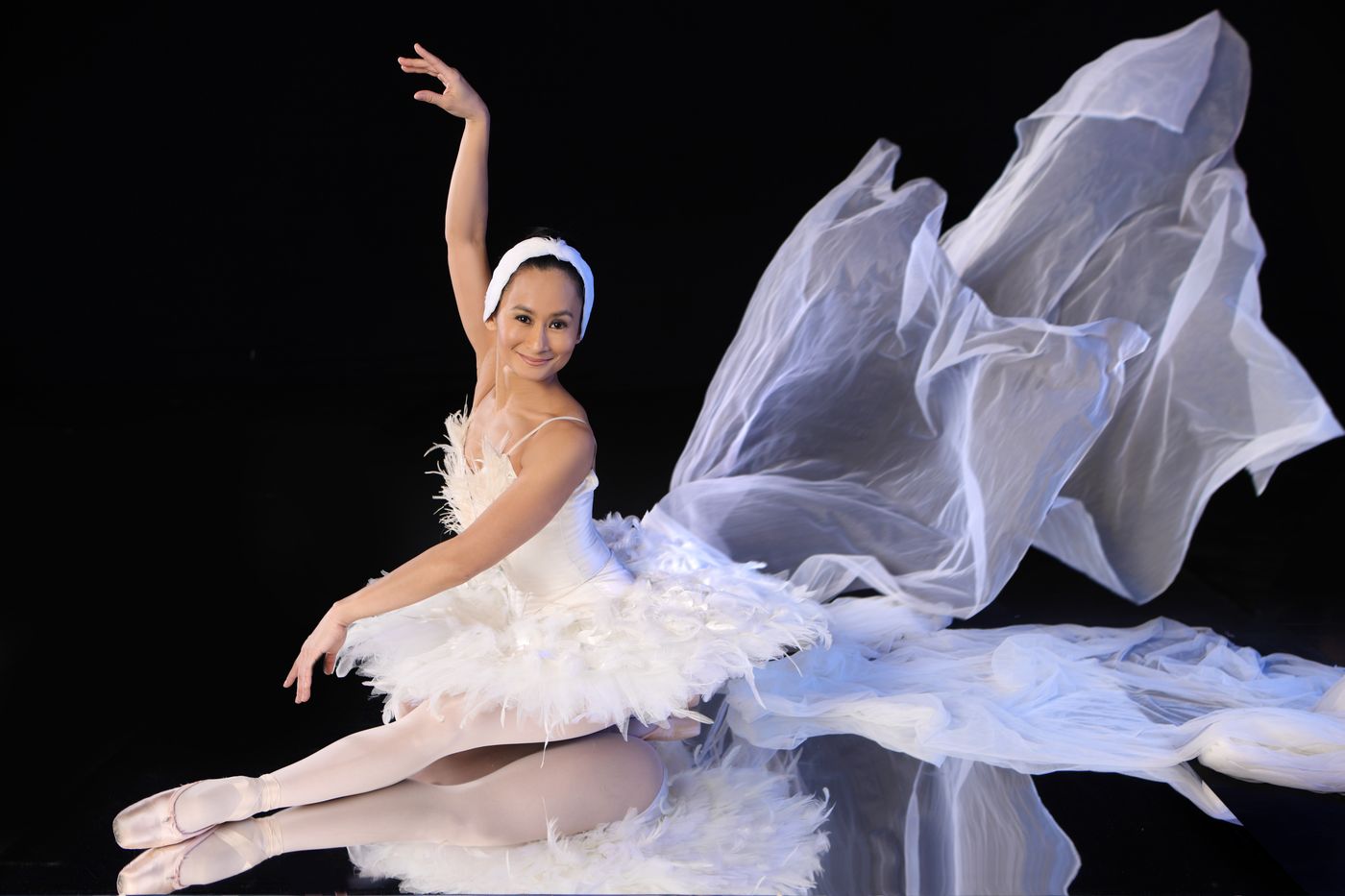Home>Events & Info>Ballet>What Is A Arabesque In Ballet
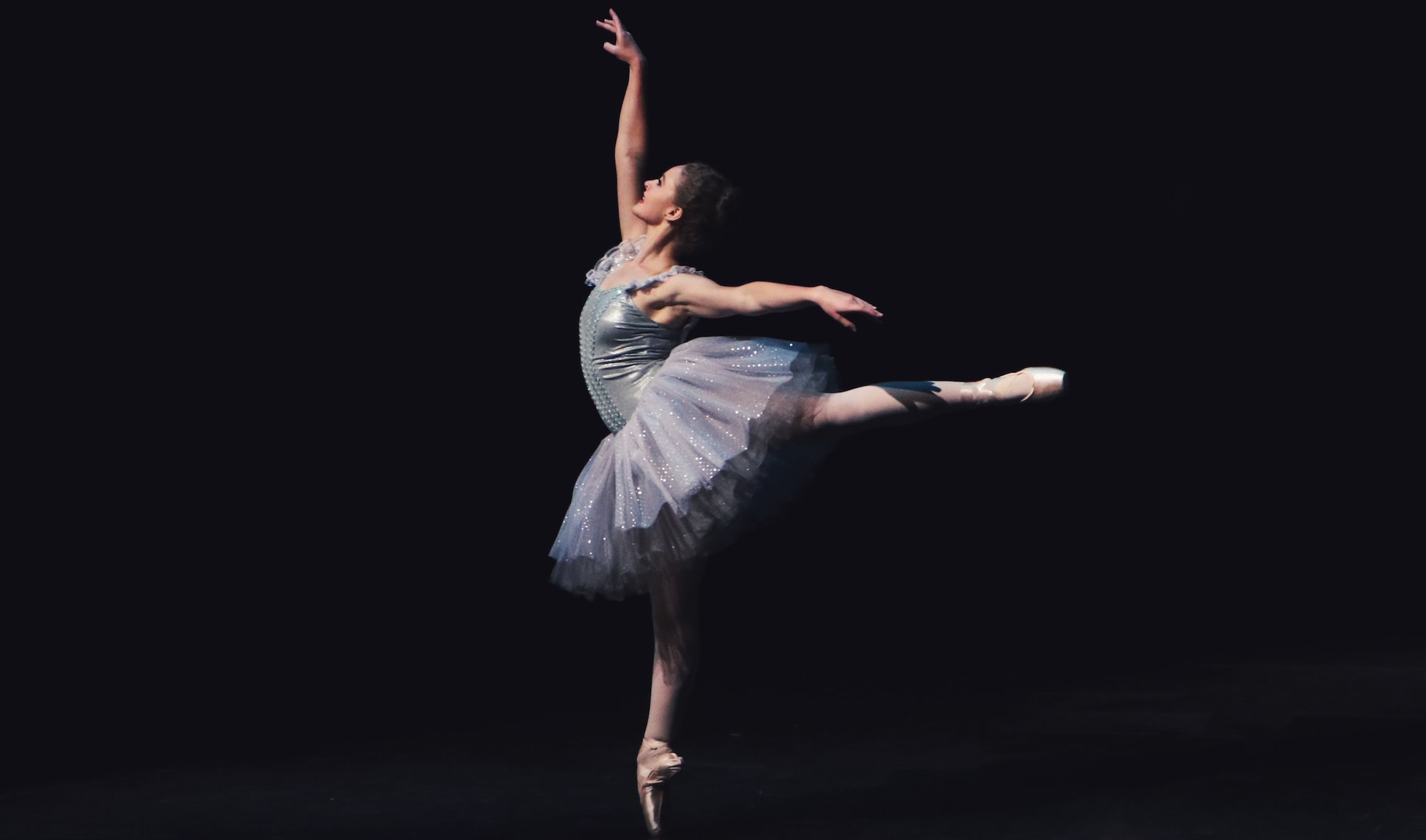

Ballet
What Is A Arabesque In Ballet
Modified: January 22, 2024
Discover the beauty and intricacy of an Arabesque in ballet. Explore the definition, techniques, and importance of this graceful ballet movement.
(Many of the links in this article redirect to a specific reviewed product. Your purchase of these products through affiliate links helps to generate commission for AudioLover.com, at no extra cost. Learn more)
Table of Contents
- Introduction
- Definition of Arabesque in Ballet
- Origins and History of Arabesque
- Technique and Execution of Arabesque
- Variations and Types of Arabesque
- Importance and Significance of Arabesque in Ballet
- Arabesque in Other Dance Forms
- Notable Dancers Known for Their Arabesque
- Challenges and Common Mistakes in Arabesque
- Tips for Improving Arabesque Technique
- Conclusion
Introduction
Welcome to the graceful and enchanting world of ballet! As one of the most renowned and revered dance forms, ballet embodies an ethereal beauty that captivates audiences around the globe. Every movement in ballet holds a special significance, telling a story through precise technique and expressive artistry.
Among the many iconic movements in ballet, the arabesque stands out as a true testament to the art form’s elegance and artistry. With its elongated lines and breathtaking shapes, the arabesque is a cornerstone of ballet technique, mesmerizing both ballet enthusiasts and newcomers alike.
In this article, we will delve into the enchanting world of the arabesque, exploring its definition, history, technique, variations, and significance in the realm of ballet. Whether you are a ballet aficionado or simply intrigued by the art form, this article will provide you with an in-depth understanding of this majestic movement.
So, let us embark on this balletic journey as we uncover the beauty and intricacies of the arabesque in ballet.
Definition of Arabesque in Ballet
In the world of ballet, an arabesque is a fundamental pose or position characterized by a dancer extending one leg behind the body while maintaining a balanced and elongated posture. This captivating pose creates a beautiful line, showcasing the dancer’s strength, flexibility, and poise.
The term “arabesque” derives from the French word meaning “Arab-like” or “ornament.” This name is inspired by the graceful and intricate patterns found in Middle Eastern and Islamic art and architecture, which often feature intricate designs and flowing lines.
Arabesques showcase the dancer’s lines and are typically performed with the supporting leg in a demi-pointe or full pointe position, while the working leg is extended either to the back, side, or front. The upper body remains upright, with the arms usually positioned in delicate and coordinated movements to enhance the overall aesthetic.
Arabesques are an integral part of classical ballet technique and are present in various ballets, serving as a foundation for other movements and poses. The position requires a balance between strength, flexibility, and grace, showcasing the dancer’s control and control over their body.
There are different variations and types of arabesques, each with its own unique characteristics and challenges. From the iconic arabesque à la seconde, where the working leg is extended to the side, to the arabesque penchée, where the upper body leans forward over the extended leg, each variation adds its own artistic flair to the ballet vocabulary.
Now that we have established the definition and basic characteristics of the arabesque in ballet, it is time to explore its origins and rich history within the dance form.
Origins and History of Arabesque
The origins of the arabesque in ballet can be traced back to the court dances of the Renaissance era in Europe. During this time, ballet was heavily influenced by the graceful and intricate movements of aristocratic courts, as well as the cultural exchanges between European and Middle Eastern societies.
As ballet developed as an art form, the arabesque took on a more central role in the repertoire. It became a fundamental element of the French ballet technique, which served as the foundation for classical ballet as we know it today.
The influence of the Middle East on ballet can be seen through the work of renowned choreographer Marius Petipa. Petipa, who is considered the father of classical ballet, incorporated elements of Orientalism into his choreography, introducing exotic movements and poses into ballets like “La Bayadère” and “Le Corsaire.”
Throughout history, the arabesque has evolved and adapted with the changing trends of ballet. During the Romantic era, which spanned from the 19th to the early 20th century, ballet experienced a shift towards more ethereal and emotional storytelling. This period saw dancers such as Marie Taglioni and Fanny Elssler mesmerize audiences with their graceful arabesques, often portraying ethereal and supernatural characters in their performances.
As ballet entered the 20th century, choreographers such as George Balanchine and Rudolf Nureyev pushed the boundaries of the arabesque, incorporating athleticism and virtuosity into their choreography. The arabesque became more dynamic and daring, showcasing the technical abilities of the dancers.
Today, the arabesque continues to be an essential element of ballet technique and is taught and performed in ballet schools and companies worldwide. Its popularity and significance have endured over the centuries, making it an iconic symbol of grace, strength, and artistry within the ballet community.
Next, let’s explore the technique and execution of the arabesque, diving into the details of how dancers achieve the breathtaking lines and shapes associated with this captivating pose.
Technique and Execution of Arabesque
The arabesque requires a combination of strength, flexibility, and proper alignment to achieve the desired elegance and balance. Here, we will delve into the technique and execution of this captivating pose in ballet.
Starting from a neutral standing position with the feet together, the dancer begins the arabesque by extending one leg behind the body. The supporting leg remains straight, with the foot either in demi-pointe or full pointe, depending on the specific arabesque variation.
The working leg is extended either to the back, side, or front, with the foot pointed and the leg ideally lifted as high as possible without compromising the dancer’s alignment and control. The hips should remain square and level, with the weight evenly distributed between the supporting leg and the core engaged for stability.
As the leg extends, the torso maintains an upright position, creating a long and graceful line from the crown of the head to the extended foot. The arms play an essential role in the arabesque, with various arm positions adding aesthetic appeal and enhancing the overall balance and fluidity of the pose.
The execution of the arabesque requires a strong and controlled use of the muscles, especially in the supporting leg and core. The dancer must maintain a sense of stability and balance while simultaneously achieving the desired height and extension of the working leg.
Proper alignment is crucial in executing the arabesque. The hips should remain squared and level, avoiding any twisting or tilting of the pelvis. The shoulders should be relaxed and down, with the chest lifted and the spine lengthened. It is essential to avoid overarching the back or collapsing through the torso.
Engaging the turnout muscles in the supporting leg is essential to maintain a clean and aesthetically pleasing arabesque line. The turnout should originate from the hips, allowing the leg to rotate externally from its socket without straining the knee or ankle.
The length and extension of the working leg in the arabesque will vary depending on the dancer’s flexibility and strength. It is essential to find the balance between achieving the desired height and extension while maintaining control and alignment.
With practice and proper technique, dancers can develop an exquisite arabesque, with their lines and shapes creating a visual harmony that captivates both the dancer and the audience.
Now that we have explored the technique and execution of the arabesque, let’s delve into the different variations and types of arabesques that add versatility and beauty to the ballet repertoire.
Variations and Types of Arabesque
The arabesque in ballet offers a wide range of variations and types, each with its own unique characteristics and challenges. These variations add depth and artistic flair to the ballet vocabulary, showcasing the versatility and creativity of dancers. Let’s explore some of the notable variations and types of arabesque:
- Arabesque à la seconde: In this variation, the working leg is extended to the side, forming a 90-degree angle with the body. The supporting leg can be either in demi-plié or straight, while the arms usually accompany the movement, one arm extended to the side and the other arm in a complementary position.
- Arabesque en avant: In this variation, the working leg is extended forward, often at a height that is slightly lower than the arabesque à la seconde. The supporting leg can be in demi-plié or straight, and the arms can be positioned in various ways, such as rounded or extended in opposition to the working leg.
- Arabesque en arrière: This variation involves extending the working leg backward, creating a beautiful line behind the body. The supporting leg is typically straight, with the arms stretching forward or curving gracefully to complement the movement.
- Arabesque penchée: Also known as arabesque incliné or arabesque à terre, this variation adds an additional level of difficulty by leaning forward from the waist while the working leg extends behind the body. The supporting leg can be demi-plié or straight, and the arms can be positioned in a variety of ways, often reflecting the incline of the upper body.
- Arabesque développé: In this variation, the working leg extends to the back, side, or front while gradually unfolding from a bent position. This movement emphasizes control, strength, and fluidity as the working leg unfolds and reaches its highest point while maintaining proper alignment and balance.
These are just a few examples of the variations and types of arabesques found in ballet. Each variation requires a unique combination of technique, strength, and artistry, adding complexity and beauty to the dancer’s repertoire.
Now that we have explored the various types of arabesques, let us discuss the importance and significance of the arabesque in the realm of ballet.
Importance and Significance of Arabesque in Ballet
The arabesque holds immense importance and significance in the world of ballet. This elegant and captivating pose not only showcases the technical abilities of dancers but also serves as a foundation for other movements and artistic expressions. Let’s explore the reasons why the arabesque is an essential element of ballet:
1. Technical Mastery: The arabesque requires a combination of strength, flexibility, and balance. Dancers must develop the necessary muscular control and body alignment to execute the pose with precision and grace. Mastering the arabesque helps dancers develop the fundamental skills required for other challenging ballet movements.
2. Aesthetic Appeal: The arabesque creates a visually mesmerizing line that captures the beauty and elegance of ballet. The elongated position of the body, combined with the extension of the working leg, creates a sense of grace and fluidity. It adds an element of artistry to ballet performances, enhancing the overall aesthetic beauty of the dance.
3. Expressive Artistry: The arabesque allows dancers to convey emotions and tell stories. It can be used to portray various characters, from ethereal beings to strong and confident individuals. The position of the body and arms, along with the intensity of the gaze, can bring depth and expression to a dancer’s performance, amplifying the narrative and connecting with the audience.
4. Versatility and Creativity: The arabesque offers a wide range of variations and possibilities for artistic interpretation. Choreographers can explore different angles, dynamics, and transitions within the arabesque, enhancing the choreographic composition and showcasing the versatility and creativity of dancers. It serves as a catalyst for innovative and exciting ballet creations.
5. Symbol of Ballet: The arabesque has become a symbol of ballet itself. It represents the grace, discipline, and dedication that dancers embody in their pursuit of excellence. The arabesque, with its aesthetic appeal and technical demands, encapsulates the essence of ballet and serves as a visual representation of the art form.
The presence of arabesques in ballets, whether in classical, neoclassical, or contemporary works, reinforces their importance and timeless significance. They are often featured as standalone movements, as well as woven into intricate dance combinations and pas de deux, further highlighting their central role in ballet repertoire.
Next, let’s explore how the arabesque extends beyond ballet and finds its place in other dance forms.
Arabesque in Other Dance Forms
While often associated with ballet, the arabesque has also made its way into various other dance forms, showcasing its universal appeal and influence. Let’s explore how the arabesque is incorporated in other dance styles:
1. Contemporary Dance: In contemporary dance, which embraces a fusion of various techniques and styles, the arabesque is utilized to create expressive and dynamic movements. Dancers may experiment with different angles, levels, and speeds while maintaining the integrity of the arabesque position. The arabesque in contemporary dance can be used to convey a range of emotions and explore unique physicality.
2. Jazz Dance: In jazz dance, the arabesque is often stylized and infused with elements of athleticism and sharpness. Dancers may incorporate dynamic kicks, rapid changes in direction, and syncopated rhythms into their arabesque movements. This adds a dynamic and energetic flair to the traditional balletic pose.
3. Modern Dance: Modern dance pioneers like Martha Graham and Isadora Duncan have reimagined and redefined the arabesque in their choreography. In modern dance, the arabesque is often used as a starting point for exploratory movements and gestures. Dancers may bend, twist, or curve their bodies, breaking away from the traditional vertical alignment while still maintaining the essence of the arabesque pose.
4. Flamenco Dance: In flamenco, a passionate and expressive dance form from Spain, the arabesque is known as “marcaje.” While the positioning of the legs and arms may vary from the traditional ballet arabesque, the essence of an extended leg behind the body is present in certain flamenco movements. This adds fluidity and elegance to the fiery footwork and emotive gestures of flamenco dancers.
The use of the arabesque in these dance forms demonstrates its versatility and adaptability across different movement vocabularies. It speaks to the enduring appeal and universal language of this captivating pose.
Now, let’s explore some notable dancers who have become renowned for their exceptional execution of the arabesque.
Notable Dancers Known for Their Arabesque
Throughout the history of ballet, there have been numerous dancers who have captivated audiences with their exceptional execution of the arabesque. These dancers have demonstrated not only technical prowess but also a unique ability to bring artistry and emotion to this iconic pose. Let’s explore some notable dancers known for their exquisite arabesques:
1. Rudolf Nureyev: Renowned for his legendary artistry and athleticism, Nureyev possessed a mesmerizing arabesque. His arabesques showcased impeccable technique, with his extension and control leaving audiences in awe. Nureyev’s arabesques were not only technically virtuosic but also expressed a sense of power and intensity.
2. Natalia Makarova: Known for her ethereal beauty and breathtaking lines, Makarova was celebrated for her exceptional arabesques. Her arabesques had a graceful quality, seamlessly combining elegance, flexibility, and emotional depth. Makarova’s arabesques epitomized the artistry and lyricism of ballet.
3. Sylvie Guillem: A trailblazer in the ballet world, Guillem pushed the boundaries of technique and artistry. Her arabesques were renowned for their extraordinary extension and seemingly effortless control. Guillem’s arabesques were dynamic and adventurous, revealing her unparalleled versatility as a dancer.
4. Mikhail Baryshnikov: Baryshnikov’s arabesques were a testament to his exceptional technique and athleticism. His arabesques showcased remarkable height and a sense of weightlessness, combining strength with a sublime lightness. Baryshnikov’s arabesques enthralled audiences with their precision and artistry.
5. Margot Fonteyn: Fonteyn possessed an innate elegance and grace that shone through in her arabesques. Her arabesques were characterized by a perfect balance of strength and serenity, displaying a delicate yet assured quality. Fonteyn’s arabesques remain an inspiration for generations of dancers.
These are just a few examples of the many remarkable dancers who have left an indelible mark with their captivating arabesques. Each dancer brought their own unique interpretation and artistry to this iconic ballet pose, showcasing the potential for creativity and expression within the context of the arabesque.
Next, let’s explore some of the common challenges and mistakes that dancers face when working on their arabesque.
Challenges and Common Mistakes in Arabesque
While the arabesque may appear effortless and graceful when executed by skilled dancers, it presents a set of unique challenges. From technical requirements to proper body alignment, dancers face various obstacles when perfecting their arabesque. Let’s explore some common challenges and mistakes that dancers may encounter when working on their arabesque:
1. Balance and Stability: Maintaining balance and stability in the arabesque can be challenging, especially when lifting the working leg to a high extension. Dancers must develop core strength and stability to prevent tilting or wavering in the pose. Lack of stability can result in compromised alignment and less control over the movement.
2. Flexibility and Extension: Achieving a high and extended position in the working leg without compromising technique or alignment can be a significant challenge. Dancers need to work on their flexibility and strength to gradually increase their range of motion, allowing for greater height and extension in the arabesque. It is crucial to avoid forcing the leg into a higher position at the expense of proper alignment.
3. Proper Alignment: Maintaining correct body alignment is essential in executing a beautiful arabesque. Common mistakes include overarching the lower back, collapsing the chest, or allowing the shoulders to rise. It is important to engage the core muscles, lengthen the spine, and square the hips while executing the arabesque to maintain an aesthetically pleasing and balanced pose.
4. Turnout and Hip Placement: Proper turnout from the hips is crucial in achieving a clean and aligned arabesque. Common mistakes include allowing the working leg to rotate inward or compromising the alignment of the supporting leg. Ensuring correct turnout from the hips and maintaining proper alignment in both legs can enhance the appearance and stability of the arabesque.
5. Tension and Lack of Fluidity: Holding tension in the body, particularly in the neck, shoulders, or jaw, can hinder the fluidity and grace of the arabesque. Dancers should focus on maintaining a sense of ease and relaxation in the upper body, allowing the movement to flow with a sense of natural fluidity.
Overcoming these challenges and avoiding common mistakes requires focused and consistent training. Dancers should work closely with their instructors to address specific areas of improvement, focusing on strengthening the relevant muscle groups and maintaining proper technique.
Now that we understand the challenges and mistakes associated with the arabesque, let’s explore some tips to help dancers improve their arabesque technique.
Tips for Improving Arabesque Technique
Improving arabesque technique requires dedication, practice, and focused training. By incorporating these tips into your ballet training, you can enhance the quality and execution of your arabesque:
1. Strengthen Core and Leg Muscles: Building strength in the core and leg muscles is crucial for maintaining stability and control in the arabesque. Incorporate exercises such as planks, leg lifts, and relevés to target these muscle groups and improve their strength and endurance.
2. Develop Flexibility: Work on improving your flexibility, particularly in the hips, hamstrings, and quadriceps, to achieve a higher and more extended arabesque. Incorporate regular stretching exercises into your warm-up and cool-down routines, and perform targeted stretches specifically for the muscles involved in the arabesque.
3. Focus on Alignment: Pay attention to your body alignment throughout the arabesque. Engage the core muscles, lengthen the spine, and ensure that the supporting leg is properly aligned with the turnout from the hips. Regularly practice in front of a mirror or seek feedback from your instructor to fine-tune your alignment.
4. Practice Stability and Balance: Strengthen your balance and stability through various exercises such as développés, passé relevés, and single-leg balances. Practicing these exercises regularly will help you develop the necessary control and stability required for a solid and controlled arabesque.
5. Work on Artistry: Remember that the arabesque is not simply a technical position but also an opportunity for artistic expression. Focus on conveying emotion and storytelling through your body and facial expressions. Experiment with different arm positions, gaze, and dynamics to add depth and meaning to your arabesque movements.
6. Seek Guidance from an Instructor: Work closely with your ballet instructor to receive individualized feedback and guidance on improving your arabesque technique. They can provide specific exercises, corrections, and insights tailored to your unique needs and areas of improvement.
7. Practice Regularly: Consistency is key in improving your arabesque. Set aside dedicated practice time to work on developing strength, flexibility, and technique specifically for the arabesque. Regularly incorporate arabesque exercises into your training routine to make continuous progress.
By following these tips and maintaining a focused mindset, you can gradually improve your arabesque technique and achieve a more refined, controlled, and aesthetically pleasing pose.
Now that we have covered these tips, let’s conclude our exploration of the arabesque in ballet.
Conclusion
The arabesque, with its elongated lines and breathtaking beauty, holds a significant place in the world of ballet. It embodies the essence of grace, strength, and artistry that defines this captivating dance form. From its origins rooted in court dances to its evolution as a central pose in classical ballet, the arabesque has enthralled audiences for centuries.
As we have explored in this article, the arabesque requires technical mastery, proper alignment, and a balance between strength and flexibility. It serves as a foundation for other movements, showcases the creativity of choreographers, and allows dancers to express emotion and tell compelling stories through their bodies.
Notable dancers throughout history have become renowned for their exceptional execution of the arabesque, captivating audiences with their artistry and skill. However, mastering the arabesque comes with its own set of challenges and common mistakes. By focusing on core strength, alignment, flexibility, and practicing regularly, dancers can overcome these obstacles and improve their arabesque technique.
Furthermore, the arabesque extends beyond ballet and finds its place in other dance forms, adapting and evolving to suit different styles and artistic visions. This showcases the universal appeal and versatility of this iconic pose.
In conclusion, the arabesque stands as an enduring symbol of the beauty, discipline, and artistry in ballet. Through its precise execution, dancers transcend the boundaries of the physical and reach the realm of artistic expression. Whether you are a ballet enthusiast or simply appreciate the elegance of dance, the arabesque is a breathtaking movement that continues to captivate and inspire audiences around the world.

